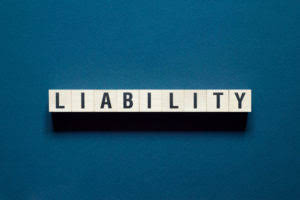
To better understand the TIE, it’s helpful to look at a times interest earned ratio explanation of what this figure really means. You could look at the TIE as a solvency ratio, because it measures how easily a business can fulfil its financial obligations. Interest payments are used as the metric, since they are fixed, long-term expenses. If a business struggles to pay fixed expenses like interest, it runs the risk of going bankrupt. In this way, the ratio gives an early indication that a business might need to pay off existing debts before taking on more. A common solvency ratio utilized by both creditors and investors is the times interest earned ratio.

Drawbacks of Times Interest Earned Ratio
To calculate TIE (times interest earned), use a multi-step income statement or general ledger to find EBIT (earnings before interest and taxes) and interest expense relating to debt financing. Divide EBIT by interest expense to determine how many times EBIT covers interest expense to assess the level of risk for making interest payments on debt financing. The ratio is stated as a number rather than a percentage and the figures QuickBooks that are necessary to calculate the times interest earned are found easily on a company’s income statement. The times interest earned ratio is a common solvency ratio used by both creditors and investors.
Why the Times Interest Earned Ratio Matters
In an article, LeaseQuery, a software company that automates ASC 842 GAAP lease times interest earned ratio accounting, explains lease interest expense calculation, classification, and reporting. However, lease-related interest expense is not considered an operating expense and, therefore, is not included in the calculation of EBITDA and EBIT. Companies report interest expense related to operating leases as part of lease expense rather than as interest expense.

Operating Income Calculation (EBIT)
The times interest earned ratio a basic measure of the ability to cover interest payments. The ratio is especially relevant for bankers and other lenders, all of whom will have minimum repayment standards. The times interest earned ratio is also known as the interest coverage ratio and it’s a metric that shows QuickBooks Accountant how much proportionate earnings a company can spend to pay its future interest costs.
- Our strategic partnerships with trusted companies support our mission to empower self-directed investors while sustaining our business operations.
- An interest coverage ratio of 1.5 is low, and lenders may refuse to lend the company more money, as the company’s risk of default may be perceived as high.
- A company’s executives may compare its times interest ratio to similar companies in the same business to see how well they are doing.
- The EBITDA TIE ratio includes depreciation and amortization in the earnings figure, which provides a different perspective on a company’s operating performance and ability to service debt.
- It means the company’s earnings before interest and taxes are eleven times greater than its interest expenses.
- To assess a company’s ability to pay principal plus interest on debt, you can also use the debt service coverage ratio.
Ready to save time and money?
From our example, it’s clear that Steady Industrial Corp., with a TIER of 8, is better positioned to meet its interest obligations compared to Growth Tech Ltd., which has a TIER of 5. This indicates that Steady Industrial Corp. has a stronger financial position when servicing its debt. The Times Interest Earned Ratio Calculator is used to calculate the times interest earned (TIE) ratio.
- If a company has a low times interest earned ratio, it can improve this measure by increasing earnings or by paying off debt.
- Earn more money and pay your debts before they bankrupt you, or reconsider your business model.
- By following these best practices, analysts and investors can make informed decisions about a company’s creditworthiness and financial health.
- Analysts and investors use the times interest earned ratio to measure solvency and determine if a company is generating enough income to support its debt payments.
- Although it’s not racking up debt, it’s not using its income to re-invest back into business development.
- A higher times interest earned ratio indicates a company has more than enough income to pay its interest expense, reducing the risk of default and reflecting its creditworthiness.
Is a higher times interest earned ratio good?

It suggests that a company generates sufficient earnings to comfortably handle its interest payments, often seen as financially stable and less risky. A high TIE ratio signals that a company has ample earnings to pay off its interest expenses, which generally denotes strong financial health. Understanding why the times interest earned ratio is an essential metric for businesses to make informed decisions.

How I’m saving for retirement: “In 3 years we’ll have a million in investments”
This ratio provides insight into the company’s ability to meet its debt obligations. A higher TIE ratio suggests that the company generates sufficient earnings to comfortably cover its interest expenses, indicating strong financial health and lower risk for creditors. Conversely, a lower TIE ratio may signal potential difficulties in meeting interest payments, raising concerns about the company’s long-term viability. The times interest earned ratio is an accounting measure used to determine a company’s financial health.

Exploring Data Easily and Securely: Essential Features for Excel Dashboards
Therefore, it is essential to compare a company’s interest coverage ratio to industry benchmarks and analyze its trend over time for a comprehensive assessment. While a low TIE Ratio can indicate potential financial distress, it should not be used as a sole predictor of bankruptcy. A comprehensive analysis, including other financial ratios and metrics, is necessary for accurate predictions. The TIE Ratio should be evaluated periodically, typically on an annual basis, to track a company’s financial stability and debt management ability over time.


